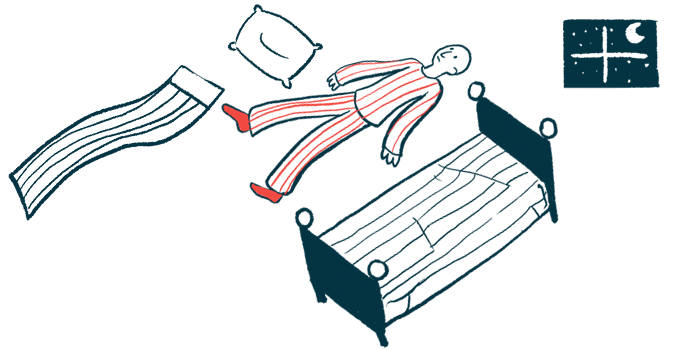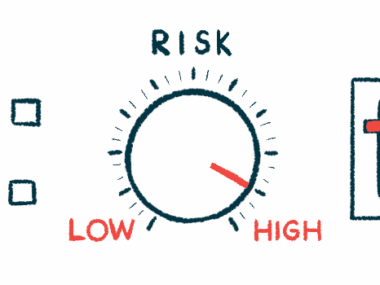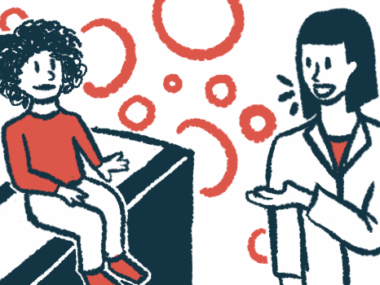Hydroxyurea doesn’t ease sleep issues in children with SCD: Study
Treatment found to increase blood oxygen levels during slumber
Written by |

Treatment with hydroxyurea increases blood oxygen levels during sleep in children with sickle cell disease (SCD), but it does not meaningfully lessen sleep disturbances, a study reports.
Compared with untreated SCD children, those given hydroxyurea (sold in the U.S. as Siklos and Xromi) had comparable sleep quality. Obstructive sleep apnea (OSA), a common sleep problem in SCD, was also similarly prevalent regardless of treatment.
This suggests that new approaches may be needed to help manage sleep concerns in SCD, according to researchers.
“The findings could provide new insights into optimizing management strategies for children with SCD and sleep dysfunction, with the goal of reducing [health problems] and improving overall quality of life,” the team wrote.
The study, “Impact of hydroxyurea on pediatric sleep in sickle cell disease,” was published in the journal Blood Red Cells & Iron by a team of researchers in the U.S.
Hydroxyurea’s effects on sleep problems unclear
SCD is a genetic disease marked by the production of a defective version of hemoglobin, the protein in red blood cells that carries oxygen throughout the body. The faulty protein causes red blood cells to become stiff and sickle-shaped, preventing proper oxygen transport and blocking blood flow.
Without proper blood flow, people with SCD may develop symptoms such as fatigue and painful vaso-occlusive crises (VOCs). Children with SCD also “have a higher prevalence of sleep disturbances than the general population,” the team wrote, although “underlying factors for persistent sleep abnormalities remain undetermined.”
OSA, one such abnormality, occurs when breathing is repeatedly disrupted during sleep, leading to low oxygen levels in the blood. This complication is of special concern, “as it is correlated with nocturnal [low blood oxygen levels], which may lead to red blood cell sickling and increased hospitalizations,” the researchers wrote.
Disease-modifying therapies for SCD, including hydroxyurea, may reduce the frequency of VOCs and ease other symptoms. However, the effects of hydroxyurea on OSA and other sleep problems are not clear.
“We hypothesized that hydroxyurea would increase nocturnal oxygen saturation, improve sleep quality, and decrease [the] degree of obstructive sleep apnea,” the researchers wrote.
Children taking hydroxyurea had significantly higher oxygen saturation
To assess this hypothesis, the researchers retrospectively examined data from 425 children with SCD who had at least one comprehensive sleep study, known as polysomnography (PSG), at Children’s Healthcare of Atlanta between 2013 and 2023.
A total of 287 children received hydroxyurea, while 138 didn’t receive any SCD therapy. The two groups had similar characteristics, although those taking hydroxyurea were significantly older at the time of their first PSG (mean of 10.21 years vs. 8.7 years).
The researchers examined peripheral oxygen saturation, or the percentage of oxygen-carrying hemoglobin molecules in the blood, during each participant’s first PSG.
Such persistent abnormalities highlight the challenges [of] optimizing sleep in this population, even when disease-modifying therapies are in place.
Children taking hydroxyurea had significantly higher oxygen saturation than those on no medications. A statistical analysis confirmed that taking hydroxyurea correlated significantly with higher oxygen saturation during different stages of sleep.
However, the percentage of children with OSA was comparable between the groups (about 50%), as were other variables, including total sleep time and the frequency of awakenings or shifts to a lighter sleep stage during the night.
“Such persistent abnormalities highlight the challenges [of] optimizing sleep in this population, even when disease-modifying therapies are in place,” the team wrote.
‘Data highlight significant variability in sleep parameters over time’
A total of 135 children had multiple PSGs, allowing the researchers to investigate changes over time. At repeated visits, oxygen saturation at the start of the PSG was significantly lower in the hydroxyurea group. However, as with the larger analysis, other variables didn’t differ significantly between the two groups.
Changes in sleep metrics over time also didn’t show consistent patterns in either group. Some values improved over time, some worsened, and others varied.
“These data highlight significant variability in sleep parameters over time, regardless of group,” the researchers wrote.
The number of hospitalizations for VOCs, asthma, and other complications didn’t correlate with changes in sleep metrics over time in the hydroxyurea group.
These findings indicate that hydroxyurea alone is likely insufficient for managing sleep problems in SCD. The results largely contradict the researchers’ initial hypotheses, as well as some previous, smaller studies, “highlighting the need for large, registry-based studies in SCD and the lack of a nationally accessible database,” the team wrote.
Still, understanding which factors cause sleep problems could help design treatments, the team noted. For example, pain or poorly controlled asthma could contribute to sleep disruptions, and treating these symptoms might improve sleep outcomes.
“Sleep dysfunction should be treated as its own important clinical target, not just as a secondary effect of SCD,” the researchers wrote.
The researchers also lacked sufficient participants receiving other disease-modifying SCD therapies, such as Adakveo (crizanlizumab), for statistical comparisons.
“This is an area that deserves further exploration because these newer therapies could have a different impact on sleep outcomes,” they wrote.







